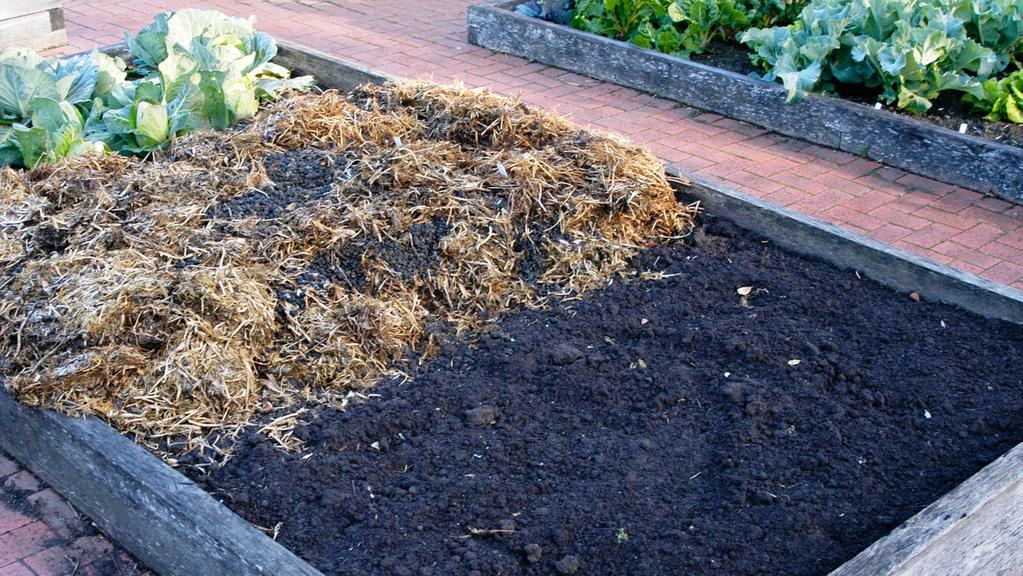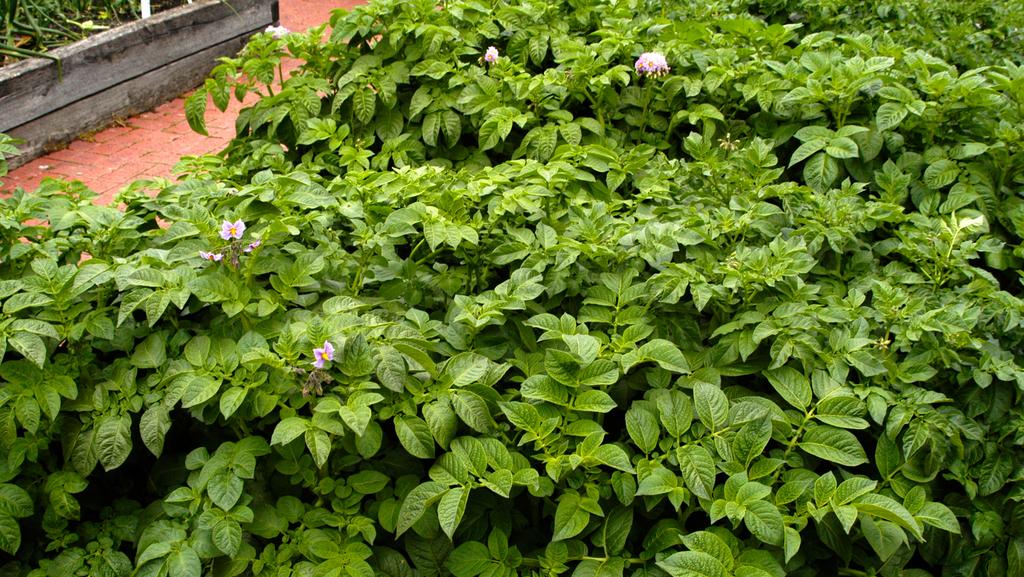Potato crops are produced in such an unusual, easy way, it is possible to produce excellent crops, even on concrete.
This is done using the enriched straw method, which also happens to be the easiest way to grow potatoes.
The way potato tubers form during growth is quite weird.
A “seed” potato is part of a special crop grown in isolation. All abnormal, diseased or pest-infested plants are removed during growth. The remaining tubers are then officially certified as disease and pest free.
Potato crops always form on top of original seed tubers, which gradually rot away.
This is why it is possible to place certified tubers on concrete and then cover them with 50cm of straw.
Soon after being planted, potato tubers start sending powerful shoots upwards. These shoots send out side roots.
Within weeks, the first, pea-sized spuds are forming on the tips.
The mulch must be heavily enriched with any type of well-rotted animal manure, pelletised poultry droppings and mushroom compost.
I chuck in plenty of blood and bone, too, and then thoroughly wet the lot to a point of saturation.

In fact, it is possible to produce excellent potato crops on any sunny surface — including concrete — but a heavy brown staining is inevitable.
The method is particularly effective over heavy clay or impoverished sand because all the fertility and nutrients are in the straw, precisely where the new tubers form.
Apart from the obvious benefits of large crops of perfectly clean, tasty potatoes without work, there are even greater rewards waiting after harvest.
By this time, most enriched straw mulch has rotted away and new, highly fertile areas, seething with happy earthworms have been created. This is a marvellously productive way to rejuvenate impoverished or difficult areas without much effort.
It is amazing how much good food we can get from growing our own potatoes — even by orthodox methods of planting certified seed tubers directly into soil.
In the right fertile conditions, most potato varieties produce high yields — up to 6kg per plant.

Every year I plant the first seed potatoes in late winter or early spring. By the beginning of December we are already eating the first utterly delicious, extra-sweet spuds.
Main crops are lifted as the tops start to die in early January and the potatoes are then stored under cover in cardboard boxes.
These boxes are covered with old pieces of carpet to exclude all light, which would cause the potatoes to turn green and be too toxic to eat.
At the moment, we are just coming to the last of last season’s stored potatoes — enough for another month. They are in good condition because I’ve been through them to snap off those inevitable sprouts.
The secret of success is a combination of soil fertility and full sunlight.
In late winter, I prepare the ground by digging in an autumn-sowed green manure crop. A week or two later, a thick layer of sheep manure mixed with pelletised chook manure and blood and bone is spread over the surface and forked in deeply.
The first spuds go in when there is no longer any danger from frosts.
Ideal spacing is about 50cm apart in rows about 1m apart.
The first green, healthy leaves will be thrusting through in a couple of weeks and the plants never look back.
No wonder homegrown spuds are so popular.